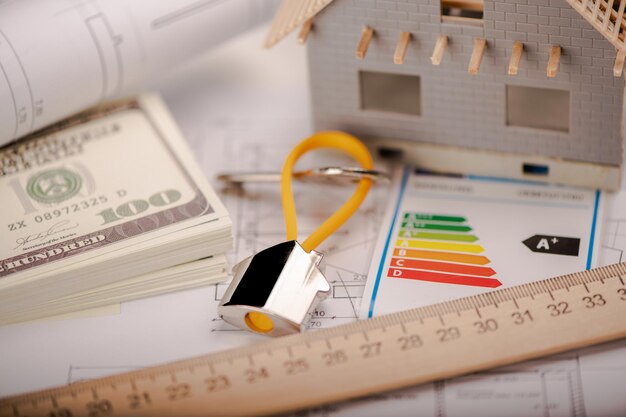Ready to Go Green? Discover How to Build a LEED-Certified Home
Building a home that harmonizes with the environment isn't just a trend—it's a smart, future-focused choice. LEED certification is one of the gold standards in green building, representing Leadership in Energy and Environmental Design. Creating a LEED-certified home means not only optimizing your environmental footprint but potentially increasing your home's market value. Here's how you can navigate the path to achieving this coveted status.
Understanding LEED Certification
LEED certification involves a set of rating systems developed by the U.S. Green Building Council (USGBC) for the design, construction, operation, and maintenance of green buildings. Homes are assessed on various factors, such as sustainability, energy efficiency, water usage, materials quality, and indoor environmental quality.
Planning Your LEED-Certified Home
Before the first stone is laid, meticulous planning is essential. Start by:
- Choosing the Right Site: Location impacts your home's environmental impact. Opt for a site that minimizes land and resource depletion.
- Engaging a LEED Professional: Hire architects and builders with LEED experience to guide the process and maximize certification credits.
- Designing with Sustainability: Integrate features like natural lighting, energy-efficient windows, and passive solar design.
Building and Development Process
- Efficient Use of Resources: Use sustainable construction materials like recycled, reclaimed, or certified wood. Opt for low-VOC paints and finishes, and ensure efficient waste management during construction.
- Energy and Water Efficiency: Install solar panels, invest in energy-efficient HVAC systems, and incorporate water-saving fixtures and appliances.
- Indoor Air Quality: Emphasize ventilation systems and use materials that promote healthy indoor air quality, diminishing pollutants and allergens.
Documentation and Certification
To gain certification, comprehensive documentation is crucial. Compile and submit the following:
- Detailed plans and specifications
- Energy modeling reports
- Material procurement records
- Waste management logs
Upon completion, your project will be reviewed, and if successful, will receive certification—ranging from Certified to Silver, Gold, or Platinum, depending on accumulated points.
Financial Considerations and Assistance
Building a LEED-certified home is an investment, often leading to long-term savings in energy and maintenance costs. Nevertheless, the upfront costs can be daunting. Here's where financial tools and aid can help:
- Federal and State Incentives: Numerous government programs offer tax credits and rebates for sustainable building practices.
- Green Mortgages: Some financial institutions provide loans with favorable terms to promote eco-friendly construction.
- Energy-Efficient Rebates: Utility companies frequently offer rebates for energy-efficient upgrades and installations.
Don't overlook educational resources and grants that can provide valuable insights and financial support through the building process.
Financial Assistance Programs to Explore:
- 🎯 Energy-Efficient Mortgage Program: Reduces loan interest rates for eco-friendly construction and renovations.
- 🌞 Solar Investment Tax Credit (ITC): Offers significant tax reduction for solar energy investments.
- 🔋 Federal Energy Grants: Provides funding for projects that incorporate renewable energy solutions.
- 💸 State-Level Tax Rebates and Credits: Various states offer specific rebates for energy-efficient choices.
- 🏦 Green Building Financing from Banks: Strategic loans and incentives for sustainable construction.
Embarking on the journey to build a LEED-certified home can be both fulfilling and financially savvy with the right guidance and resources. Utilize these strategies and assistance programs to create a legacy of sustainability, comfort, and innovation.
